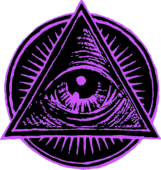On the 48th anniversary of the assassination of President John F. Kennedy, filmmaker Errol Morris released a short film called The Umbrella Man, which can be viewed on the New York Times website. In this film Errol Morris interviews Josiah “Tink” Thompson, author of Six Seconds in Dallas: A Micro-Study of the Kennedy Assassination
The Umbrella Man appears in Oliver Stone’s 1991 film JFK

The Umbrella Man is also seen in an episode of the X-Files that includes the assassination of JFK. In “Musings of a Cigarette Smoking Man“, the Smoking Man is shown as the real assassin, firing not from the Texas School Book Depository or from the Grassy Knoll, but from a storm sewer drain as the president’s motorcade passes by. From this position he relies on the Umbrella Man to signal when he should fire.
The X-Files is fiction, of course (right?), but Oliver Stone’s film is presented as fact, or at least as a plausible alternative to the Warren Commission’s ruling that Lee Harvey Oswald acted alone. as Oliver Stone explains in the director’s commentary included on the DVD release of JFK,
I mean, so many weird stories. But the point is, it was military because it was precisely done, as Fletcher Prouty points out in detail. And so was the cover-up. And so was the confusion. That’s all you can do, is you can point up 99… 144 pieces of weird evidence in a film like this because it is a deconstruction of the Warren Commission. As I call it a counter-myth not a… to the myth of the Warren Commission. It was my counter-myth. All I can do is say, “here are 140 pieces of deconstruction,” and if someone says, “well I can prove you wrong here: 10, 11, 12.” Doesn’t matter… 4, 3, 2 times. Fine. But what about the other things you cannot disprove? Y’know, eyewitnesses. This, that. The weirdness of certain things. I mean so many weird things happened. Mathematically, you pile that into a computer, I think you have a million ot one chance of a lone shot… of a lone killer. It’s just too much, you see. Too much circumstantial and primary evidence.
Stone’s commentary is included on the following clip. Note the appearance of the Umbrella Man opening his umbrella (1:19) as if to signal that the assassination is “on”, pumping his umbrella within the view of the sniper on the Grassy Knoll (2:45), and continuing to hold his umbrella open until that assassin fires the shot that hits Kennedy in the head (3:30).
In The Umbrella Man, Errol Morris is not taking issue with Oliver Stone, but this film serves as a counter to the sort of logic Stone employs in the construction of his film. Oliver Stone presents a dizzying array of images of conspiracy. Stone suggests that a skeptic might be able to provde him wrong on individual points, but that does not diminish the general idea he is putting across. In Errol Morris’s film, however, Tink Thompson presents an alternative viewpoint, not against conspiracy, but about the nature of investigation itself.
In December 1967, John Updike was writing Talk of the Town for the New Yorker. And he spent most of that Talk of the Town column talking about the Umbrella Man. He said that his learning of the existence of the Umbrella Man made him speculate that in historical research there may be a dimension similar to the quantum dimension in phsycial reality. If you put any event under a microscope you will find a whole dimension of completely weird, incredible things going on. It’s as if there’s the macro level of historical research where things sort of obey natural laws and usual things happen and unusual things don’t happen. And then there’s this other level where everything is really weird.
In 1976 the U.S. House of Representatives established the House Select Committee on Assassinations (HSCA) to investigate the recent assassinations of political figures including JFK. The HSCA released a photo of the Umbrella Man and asked the public to help locate him. Dallas resident Louie Steven Witt came forward, unaware that he had been a figure of controversy. In his testimony he described how he took the umbrella with him to Dealey Plaza to heckle the president. His protest was not against anything John F. Kennedy had done, but rather was directed at his father, Joseph P. Kennedy, Sr., who had served as ambassador to the U.K. in the years leading up to World War II. Joseph P. Kennedy, Sr., had supported Neville Chamberlain’s policy of “appeasement” toward Nazi Germany. Neville Chamberlain was often seen holding an umbrella, and the image of the umbrella became associated with appeasement. In this cartoon, David Low, cartoonist for the London Evening Standard, attached a label reading “appeasement” to an umbrella in the mouth of a tiger covered by swastikas.
Witt, then, was under the impression that John F. Kennedy would somehow recognize the symbolism of the umbrella as he was passing through Dealey Plaza, some 25 years after Neville Chamberlain’s negotiations with Adolf Hitler. See Witt’s testimony before the HSCA. Takes all kinds… Tink Thompson’s view of Witt’s testimony is,
I read that and I thought this is just wacky enough it has to be true. And I take it to be true. What it means is, that if you have any fact which you think is really sinister. Right? is really obviously a fact which can only point to some sinister underpinning. Hey, forget it man, because you can never on your own think up all the non-sinster, perfectly valid explanantions for that fact. A cautionary tale.
Back and to the left… Back and to the left… Back and to the left…

